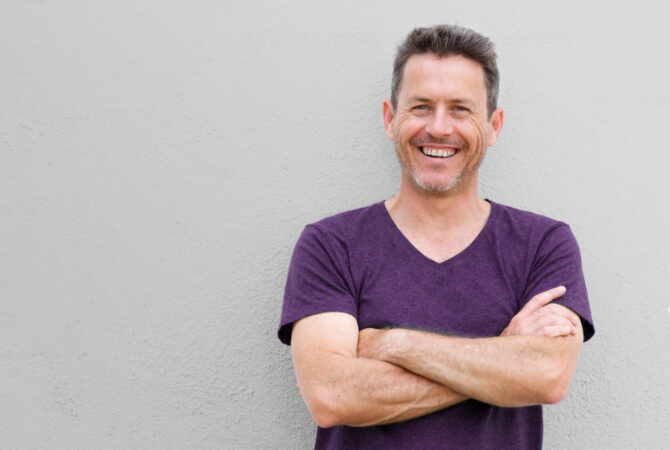
Regular exercise is an essential ingredient for good health; it helps our immune systems, cardiovascular systems and joints. It can help to prevent chronic disease and has well-known benefits for our mental health. An increasing body of evidence also shows us that regular exercise has an important role to play during, and after, prostate cancer treatment, and is also a vital part of Androgen Deprivation Therapy (ADT) – a popular, and highly effective treatment of prostate cancer.
Exercise and prostate cancer
Prostate cancer is the most common form of cancer in men, with upwards of 19,000 Australian males diagnosed with some form of the disease each year. Radiation, chemotherapy or prostatectomies (partial or complete removal of the prostate) are among the most effective methods we have for treating prostate cancer.
Evidence shows us that while it won’t cure cancer, regular exercise can prevent some cancers from developing in the first place. There’s also strong evidence that alongside keeping stress and anxiety at manageable levels, and watching your weight, regular exercise is an essential part of reducing symptoms, lessening the side-effects of radiation treatments and increasing prostate cancer survival rates.
What is ADT? Why is it important to exercise when undergoing ADT?
Androgens are hormones that control the development of male characteristics like testosterone, but they’re also a necessary ingredient for cancer in the prostate to grow. Reducing the number of androgens in the body is therefore one way to slow down the growth of cancer. ADT is now an effective and widely used treatment for prostate cancer.
Like most treatments for serious illnesses, ADT comes with some important side-effects. When the body stops producing androgens in the form of testosterone, it has a negative effect on our cholesterol and energy levels, as well as our mental health. Lower levels of androgens also impact bone density and muscle mass, which is why exercising while undergoing ADT and other treatments for prostate cancer is so crucial.
What kind of exercise will help?
When it comes to exercise and prostate cancer, it’s not a case of being given a green light to work out 24/7 at the gym. Treatment plans may limit what you’ll be able to achieve, and over-exercising could be ultimately counterproductive.
The kinds of exercise you can do will vary between individuals. The Prostate Cancer Foundation of Australia has developed factsheets the outline that role of exercise in the treatment of prostate cancer. These factsheets recommend that people diagnosed with prostate cancer should aim to meet the following goals:
- 3 to 5 sessions per week of aerobic exercise, such as cycling, walking or swimming for 20 to 60 minutes each session
- 2 sessions per week of resistance (or weights) training. In each workout, the best results come from doing no more than six to eight different exercises three times, with no more than 12 repetitions to a set
- 2 to 3 sessions of flexibility exercises for major muscle groups.
It’s essential that you talk to your doctor or oncologist, as well as an exercise physiologist, before starting any exercise program. Creating a program collaboratively is the best way to ensure that your body can cope with the activity, and you can include exercises that you find enjoyable. A customised program will also minimise the risk of muscle sprains or bone fractures that can occur due to lower than usual bone density — a common side-effect of many cancer treatments.
As your condition improves, you’ll be able to exercise for longer periods and with greater intensity. But before jumping on the bike, or diving into the pool, have a clear understanding of what’s best for your personal rehabilitation journey.










